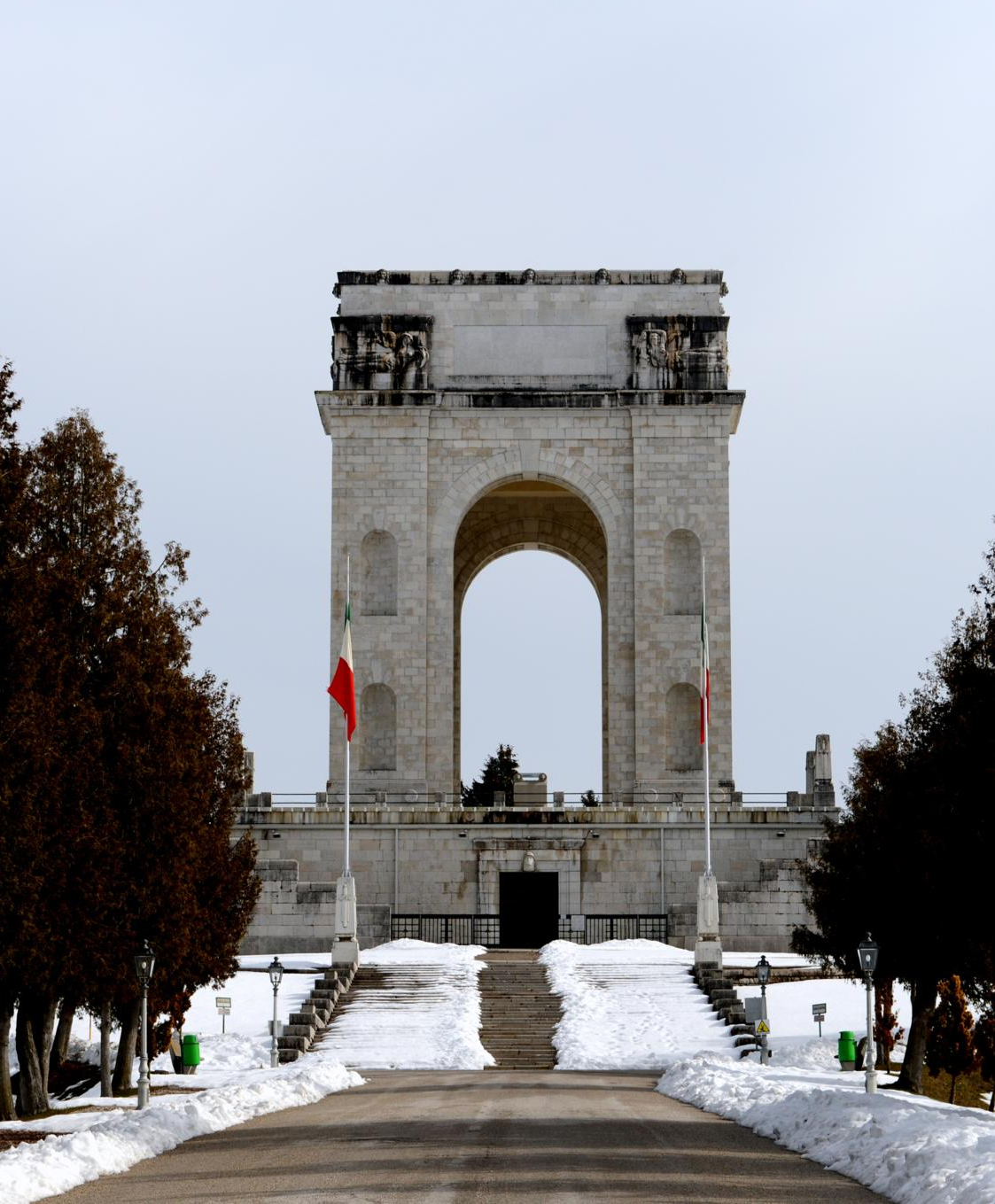back to museums
Leiten Military Memorial
Asiago
The Asiago Military Memorial stands on the Leiten Hill in the town of Asiago (Vicenza), at an altitude of 1,058 metres. It was designed by the Venetian architect Orfeo Rossato and was completed in October 1936. Its massive bulk reflects the best Roman architecture, with sober and solemn lines that can be seen both when observing it from afar and when admiring its details. The Monument was built to give dignified burial to the remains of Italian fallen soldiers from 35 war cemeteries previously scattered in the area of the Altipiano dei Sette Comuni. Many known and unknown Austro-Hungarian fallen were also collected in the crypt, from the war cemeteries of Gallio, Stoccaredo, Cesuna, Canove and Marcesina. The structure is square and has four fronts, perfectly symmetrical, and appears in all its grandeur from any point of view.
The visitThe shrine is accessed by means of a wide staircase that ends with an artistic bronze gate; to the sides of the main entrance, two symmetrical ramps lead to the terrace from which one can admire the panorama of the Altipiano dei Sette Comuni, theatre of bloody battles. The most historically important peaks are indicated on the parapet: Pasubio, Spitz di Tonezza, Zebio, Verena, Malette di Gallio, Sisemol, Valbella, Lemerle, Cengio.
The structure consists of two parts: the Crypt and the grandiose Triumphal Arch.
The Crypt has an 80-metre base and is divided into large galleries, along which the niches with the remains of the Fallen are distributed; the central galleries flow into the octagonal Chapel in whose walls are the remains of twelve fallen soldiers decorated with the Gold Medal for Military Valour.
The upper central part consists of the grandiose 47-metre-high Triumphal Arch, with base steps and a Votive Altar in the centre of the arch.
The history CloseAsiago was one of the main theatres of war actions during the Great War. A great Austro-Hungarian offensive began there from 27 May to 27 June 1916: in the first days, the enemy army occupied several positions, such as Arsiero and Asiago; on 2 June, however, the order was given to Gen. Pecori-Giraldi and the 1st Army to advance into the Asiago Plateau and thus open the front in the centre, according to Cadorna’s design, and outflank the strong lateral forces in Valsugana and Val Lagarina. Italian success was only achieved thanks to the Russian intervention, which widened the front and forced the Austro-Hungarian General von Hötzendorf to retreat. These facts led the Italian army to stand on a new front line, which was only a few kilometres in front of the one held before the battle.
